-
Home PageHome Page
-
General Chemistry 2 Homepage
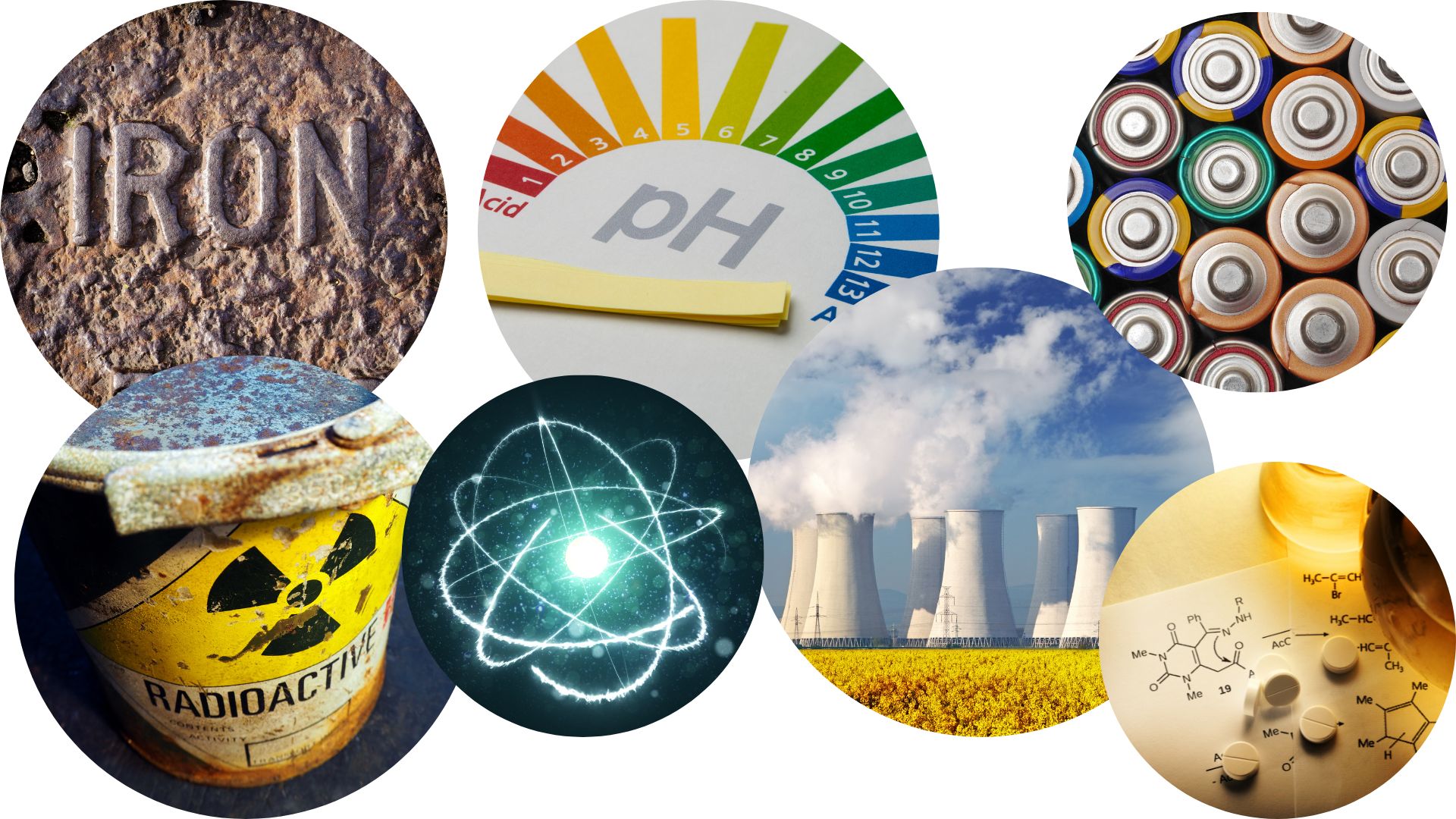

*In order to enroll in this course, you need to complete General Chemistry Part 1. Click on enroll now and input the code provided at the completion of General Chemistry Part 1.
Welcome to the General Chemistry 2 course, a part of the Pre-Health Sciences Training Certificate series. This course and certificate have been developed to cater to the needs of learners who are keen on gaining admission to health-related programs and who wish to fulfill the prerequisites for the Medical College Admission Test (MCAT).
Our General Chemistry 2 course serves as an extension of the General Chemistry 1 course and offers learners a more comprehensive understanding of the foundational principles of chemistry. Through this course, learners will be able to delve deeper into the various topics covered in Module 1, providing a more expansive overview of the subject matter.
The General Chemistry 2 course is sponsored in part by the International Development Research Centre and the University of the Incarnate Word School of Osteopathic Medicine. Like all NextGenU.org courses, it is competency-based, using competencies based on the Association of American Medical Colleges’ Medical College Admission Test. It uses learning resources from accredited, academic, professional, and world-class organizations and universities such as Rice University. The course was designed by Alixandria Ali, BSc; Pablo Baldiviezo MD, MSc, DiplEd; Sherian Bachan MSc, BSc; Carolina Bustillos MD, DiplEd; Kabiru Gulma B. Pharm, MBA, MSc., Ph.D.; Felix Emeka Anyiam, MPH, MScPH, DataSc.; Marco Aurelio Hernandez Ph.D., MSc, MSc, BSc; Reisha Narine MSc, BSc; Sara Wildman, BSc; and Aduke Williams BA.
For publications on NextGenU.org’s courses’ efficacy, see NextGenU.org’s publication page.
There are eight (8) modules to complete, which provide an introduction to:
Module 1: Thermochemistry and Thermodynamics
Module 2: Gases
Module 3: Aqueous Reactions and Solution Stoichiometry
Module 4: Physical Properties of Solutions
Module 5: Acids, Bases, and Salts
Module 6: Equilibria of Other Reactions
Module 7: Electrochemistry
Module 8: Nuclear ChemistryThe completion time for this course is estimated at 52 hours, comprising 15 hours of learning resources, 29 hours of studying and assimilation of the content, and 8 hours of participating in learning activities and quizzes to assist the learners in synthesizing learning materials. This course is equivalent to 1 credit hours in the U.S. undergraduate/bachelor’s degree system.
The course requires the completion of all quizzes, discussion forums, and practical activities to receive a course certificate. Practice quizzes are available throughout the course and contain 10 Multiple-Choice Questions each. After you’ve completed each module, quiz, and learning activity, at the end of the course, you’ll have access to a final exam consisting of 40 Multiple-Choice Questions and a chance to evaluate this course. Participants have up to three opportunities to take the final exam and achieve the required passing score of >=80%. Once you’ve passed the final exam and completed the evaluations, you will be able to download a certificate of completion from NextGenU.org and our course’s co-sponsoring organizations.
We keep all of your personal information confidential, never sell any of your information, and only use anonymized data for research purposes. Also, we are happy to report your testing information and share your work with anyone (your school, employer, etc.) at your request.
Engaging with this Course:
This free course is aimed at students who have graduated from high school and want to prepare to become a health professional and/or pass the MCAT exam. You can also browse this course for free to learn for your personal enrichment,
If you are using the course to prepare for your career as a health professional or prepare for the MCAT exam, you must complete General Chemistry 1 before.
To PASS and Obtain a Certificate, a learner must first register for the course and then successfully complete:
- The pre-test,
- All the reading requirements,
- All quizzes and pass with 80% with unlimited attempts,
- All learning activities,
- The final exam with a minimum of 80% and a maximum of 3 attempts, and
- The self and course evaluation forms.
To obtain credit:- Complete all requirements listed above for the certificate, and
- Your learning institution or workplace should approve the partner-university-sponsored NextGenU.org course for educational credit, as they usually would for their learner taking a course anywhere.
NextGenU.org is happy to provide your institution with:
- A link to and description of the course training so they can see all of its components, including the co-sponsoring institutions,
- Your grade on the final exam,
- Your work products (e.g., discussion forum responses) and any other required or optional shared materials that you produce and authorize to share with them,
- Your evaluations -- course and self-assessments,
- A copy of your certificate of completion with the co-sponsoring organizations listed.
To obtain a degree, NextGenU.org co-sponsors degree programs with institutional partners. To obtain a full degree co-sponsored with NextGenU.org, registrants must be enrolled in a degree program as a student of a NextGenU.org institutional partner. If you think your institution might be interested in offering a degree with NextGenU.org, contact us.
We hope you will find this a rewarding learning experience, and we count on your assessment and feedback to help us improve this training for future students.
Here are the next steps to take the course and earn a certificate:
- Complete the registration form,
- Take the pre-test, and
- Begin the course with Module 1: Building Blocks of Biochemistry. In each lesson, read the description, complete all required readings and any required activity, as well as take the corresponding quizzes.
-
Module 1: Thermochemistry and Thermodynamics
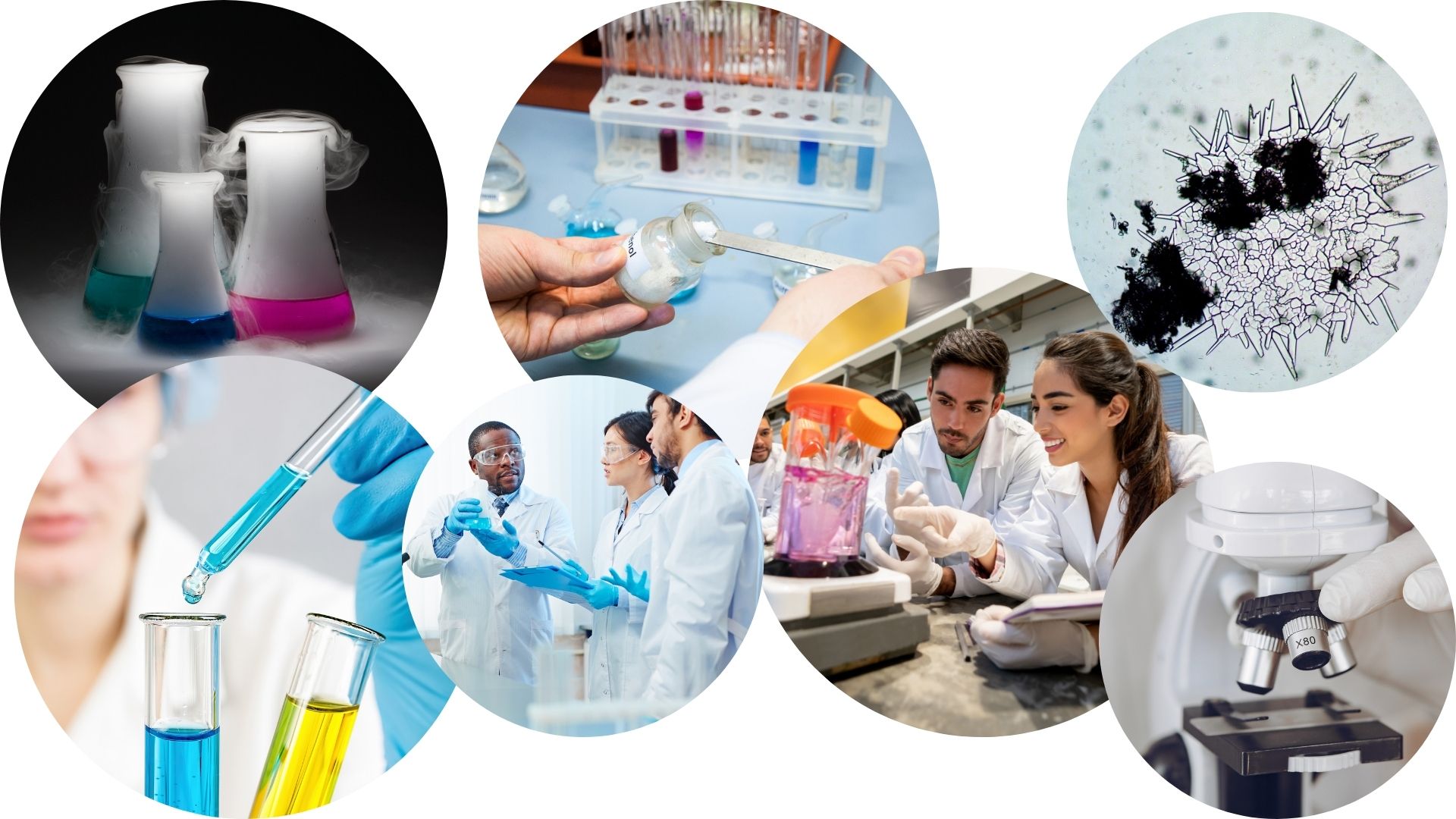 Instructional Goals covered in this module:
Instructional Goals covered in this module:- Understand the properties and applications of energy changes in chemical reactions.
- Understand the relationship between microscopic properties of molecules with thermodynamic observables.
-
Module 1: Lesson 1: Energy Basics
Upon completion of this lesson, you will be able to:Student Learning Outcomes:
- Define energy, distinguish types of energy, and describe the nature of energy changes that accompany chemical and physical changes.
- Distinguish the related properties of heat, thermal energy, and temperature.
- Define and distinguish specific heat and heat capacity, and describe the physical implications of both.
- Perform calculations involving heat, specific heat, and temperature change.
1 URL -
Module 1: Lesson 2: Calorimetry
Upon completion of this lesson, you will be able to:Student Learning Outcomes:
- Explain the technique of calorimetry.
-
Calculate and interpret heat and related properties using typical calorimetry data
1 URL -
Module 1: Lesson 3: Enthalpy
Upon completion of this lesson, you will be able to:Student Learning Outcomes:
- State the first law of thermodynamics.
-
Define enthalpy and explain its classification as a state function.
- Write and balance thermochemical equations.
- Calculate enthalpy changes for various chemical reactions.
- Explain Hess’s law and use it to compute reaction enthalpies.
1 URL - State the first law of thermodynamics.
-
Module 1: Lesson 4: Spontaneity
Upon completion of this lesson, you will be able to:Student Learning Outcomes:
- Distinguish between spontaneous and nonspontaneous processes.
-
Explain the dispersal of matter and energy that accompanies certain spontaneous processes
1 URL -
Module 1: Lesson 5: Entropy
Upon completion of this lesson, you will be able to:Student Learning Outcomes:
- Define entropy.
-
Explain the relationship between entropy and the number of microstates.
- Estimate the sign of the entropy change for chemical and physical processes.
1 URL -
Module 1: Lesson 6: The Second and Third Laws of Thermodynamics
Upon completion of this lesson, you will be able to:Student Learning Outcomes:
- State and explain the second and third laws of thermodynamics.
-
Calculate entropy changes for phase transitions and chemical reactions under standard conditions.
1 URL -
Module 1: Lesson 7: Free Energy
Upon completion of this lesson, you will be able to:Student Learning Outcomes:
- Break down the concept of Gibbs free energy and describe its relation to spontaneity.
- Calculate free energy change for a process using free energies of formation for its reactants and products.
-
Calculate free energy change for a process using enthalpies of formation and the entropies for its reactants and products.
- Explain how temperature affects the spontaneity of some processes.
- Relate standard free energy changes to equilibrium constants.
1 URL, 1 Forum, 1 Quiz -
Module 2: Gases
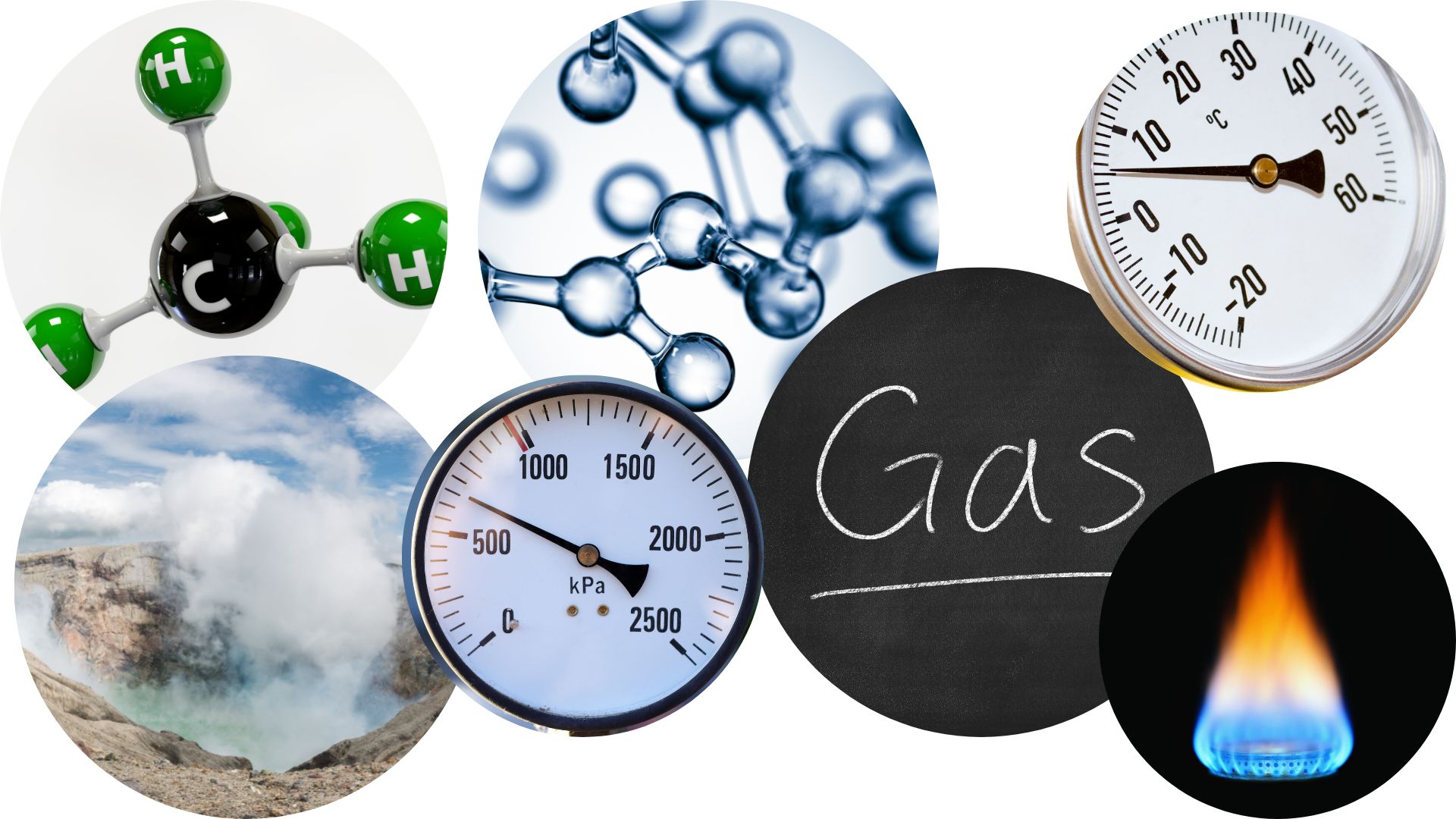 Instructional Goals covered in this module:
Instructional Goals covered in this module:- Apply the “gas laws” governing the physical/chemical behavior of gases to understand the mathematical relationship between pressure, volume, and temperature of a gas, the partial pressures of a gas in a mixture, quantitative relationships of reactants and products in a gaseous reaction and the behavior and properties of gases at the molecular level.
-
Module 2: Lesson 1: Gas Pressure
Upon completion of this lesson, you will be able to:Student Learning Outcomes:
- Define the property of pressure and convert among the units of pressure measurements.
-
Explain the operation of common tools for measuring gas pressure.
- Calculate pressure from manometer data.
1 URL -
Module 2: Lesson 2: Relating Pressure, Volume, Amount, and Temperature: The Ideal Gas Law
Upon completion of this lesson, you will be able to:Student Learning Outcomes:
- Examine the mathematical relationships between the various properties of gases.
-
Use the ideal gas law, and related gas laws, to compute the values of various gas properties under specified conditions.
1 URL -
Module 2: Lesson 3: Stoichiometry of Gaseous Substances, Mixtures, and Reactions
Upon completion of this lesson, you will be able to:Student Learning Outcomes:
- Determine the density and molar masses of a gas using the ideal gas law.
-
Perform stoichiometric calculations involving gaseous substances.
- Examine Dalton’s law of partial pressures and implement it in calculations involving gaseous mixtures.
1 URL -
Module 2: Lesson 4: Effusion and Diffusion of Gases
Upon completion of this lesson, you will be able to:Student Learning Outcomes:
- Define and explain effusion and diffusion.
-
Describe how individual gas molecules move when undergoing diffusion.
- Calculate the ratio of effusion rates of gases.
- Describe Graham’s law and use it to compute relevant gas properties.
1 URL -
Module 2: Lesson 5: The Kinetic-Molecular Theory
Upon completion of this lesson, you will be able to:Student Learning Outcomes:
- Explain the postulates of the kinetic-molecular theory.
-
Use this theory’s postulates to explain the gas laws.
- Judge how the root-mean-square (rms) molecular speed and molecular-speed distribution of gas molecules varies with temperature.
- Calculate the rms speed of gas molecules.
1 URL -
Module 2: Lesson 6: Non-Ideal Gas Behavior
Upon completion of this lesson, you will be able to:Student Learning Outcomes:
- Examine the physical factors that lead to deviations from ideal gas behavior.
-
Explain how the physical factors are represented in the van der Waals equation.
- Define compressibility (Z) and describe how its variation with pressure reflects non-ideal behavior.
- Quantify non-ideal behavior by comparing computations of gas properties using the ideal gas law and the van der Waals equation.
1 URL, 1 Forum, 1 Quiz -
Module 3: Aqueous Reactions and Solution Stoichiometry
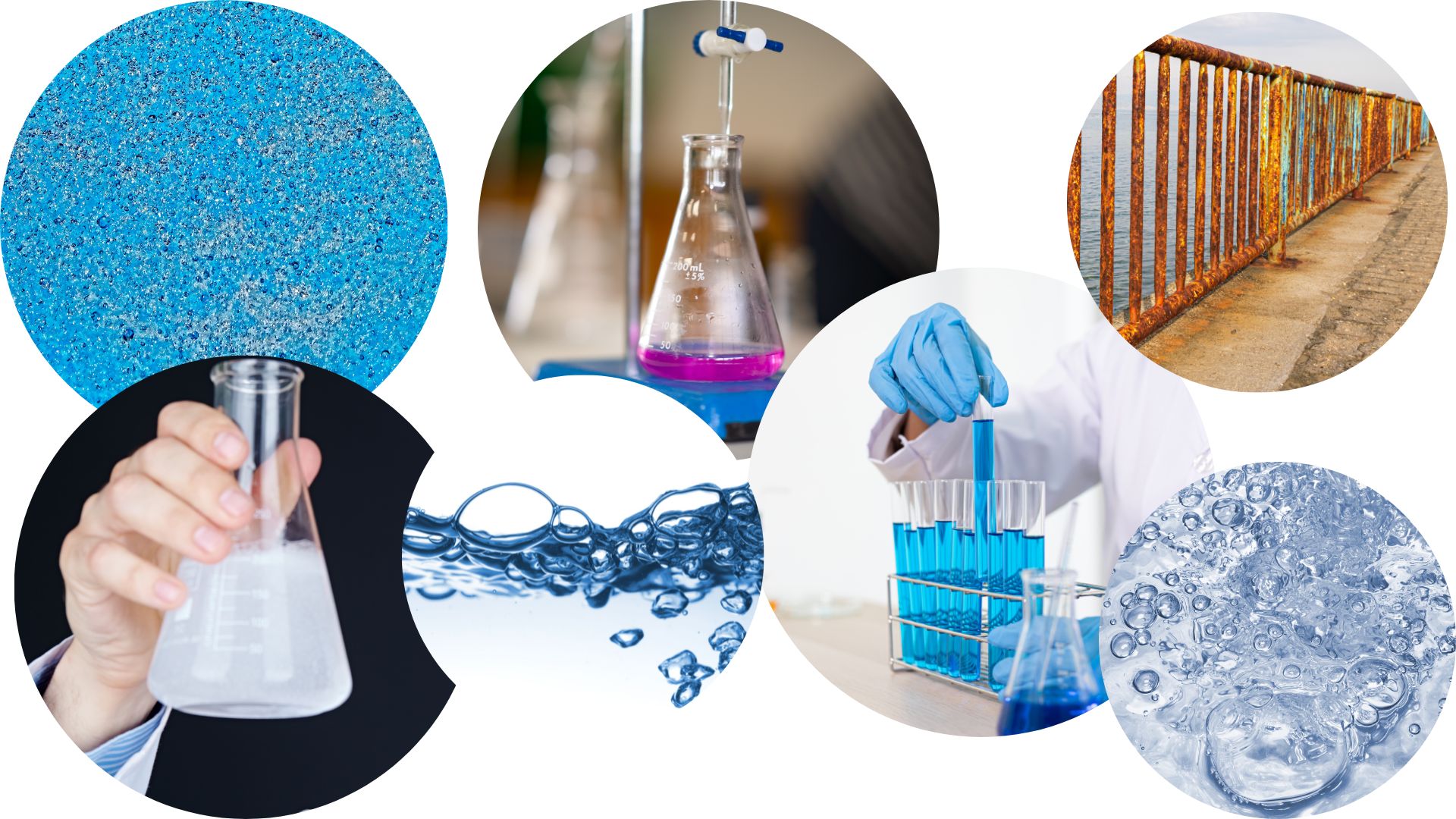 Instructional Goals covered in this module:
Instructional Goals covered in this module:- Understand the fundamentals of acid/base reactions, redox reactions, and precipitation reactions.
-
Module 3: Lesson 1: General Properties of Aqueous Solutions
Upon completion of this lesson, you will be able to:Student Learning Outcomes:
- Describe how and why solutions form.
-
Define polar substances.
- Identify electrolytes in solutions.
1 URL -
Module 3: Lesson 2: Precipitation Reactions
Upon completion of this lesson, you will be able to:Student Learning Outcomes:
- Identify the characteristics of a precipitation reaction.
-
Use guidelines to predict the solubility of ionic compounds in water.
1 URL -
Module 3: Lesson 3: Introduction to Acid-Base Reactions
Upon completion of this lesson, you will be able to:Student Learning Outcomes:
- Examine the principal properties of acids and bases.
-
Describe acids and bases using the Arrhenius and /Bronsted-Lowry definition.
1 URL -
Module 3: Lesson 4: Introduction to Oxidation-Reduction Reactions
Upon completion of this lesson, you will be able to:Student Learning Outcomes:
- Identify oxidation–reduction reactions in solution.
-
Identify the characteristics required in chemical reactions in order to be considered as redox reactions.
1 URL -
Module 3: Lesson 5: Concentration of a Solution
Upon completion of this lesson, you will be able to:Student Learning Outcomes:
- Describe the concentrations of solutions quantitatively.
-
Determine how solutions are prepared.
1 URL -
Module 3: Lesson 6: Solution Stoichiometry and Chemical Analysis
Upon completion of this lesson, you will be able to:Student Learning Outcomes:
- Calculate the concentration of an unknown solution using a titration.
1 URL, 1 Forum, 1 Quiz - Calculate the concentration of an unknown solution using a titration.
-
Module 4: Physical Properties of Solutions
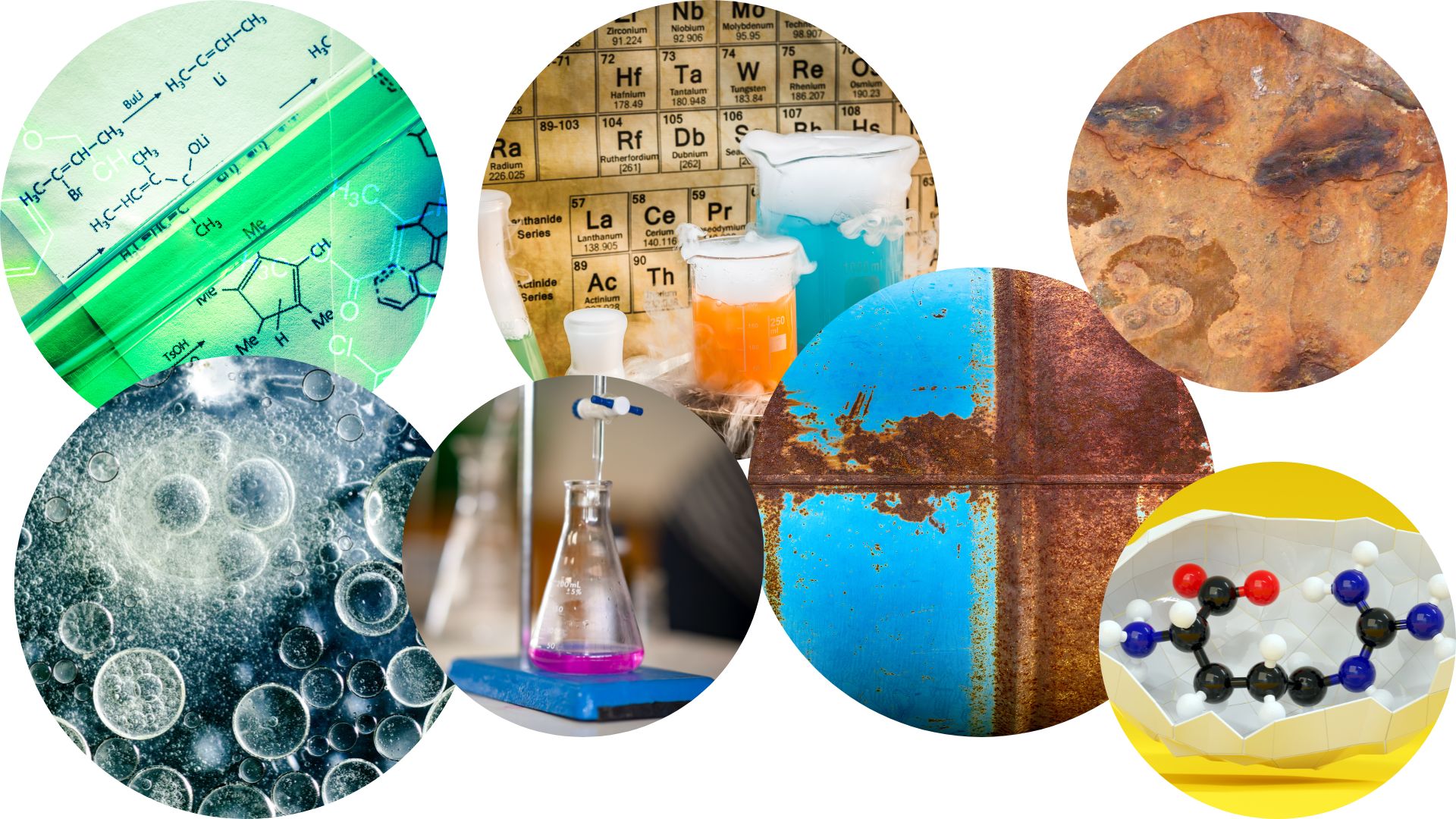 Instructional Goals covered in this module:
Instructional Goals covered in this module:- Understand solubility, complex ion equilibria, and the basic (colligative) properties of solutions.
-
Module 4: Lesson 1: The Dissolution Process
Upon completion of this lesson, you will be able to:Student Learning Outcomes:
- Describe the basic properties of solutions and how they form.
-
Predict whether a given mixture will yield a solution based on molecular properties of its components.
- Explain why some solutions either produce or absorb heat when they form.
1 URL -
Module 4: Lesson 2: Electrolytes
Upon completion of this lesson, you will be able to:Student Learning Outcomes:
- Define and give examples of electrolytes.
-
Distinguish between the physical and chemical changes that accompany dissolution of ionic and covalent electrolytes.
- Relate electrolyte strength to solute-solvent attractive forces.
1 URL -
Module 4: Lesson 3: Solubility
Upon completion of this lesson, you will be able to:Student Learning Outcomes:
- Describe the effects of temperature and pressure on solubility.
-
State Henry’s law and use it in calculations involving the solubility of a gas in a liquid.
- Explain the degrees of solubility possible for liquid-liquid solutions.
1 URL -
Module 4: Lesson 4: Colligative Properties
Upon completion of this lesson, you will be able to:Student Learning Outcomes:
- Express concentrations of solution components using mole fraction and molality.
-
Describe the effect of solute concentration on various solution properties (vapor pressure, boiling point, freezing point, and osmotic pressure).
- Perform calculations using the mathematical equations that describe these various colligative effects.
- Describe the process of distillation and its practical applications.
- Explain the process of osmosis and describe how it is applied industrially and in nature
1 URL -
Module 4: Lesson 5: Colloids
Upon completion of this lesson, you will be able to:Student Learning Outcomes:
- Describe the composition and properties of colloidal dispersions.
-
List and explain several technological applications of colloids.
- Distinguish between dispersion methods and condensation methods for preparing colloidal systems.
- Describe how colloidal particles are electrically charged.
1 URL -
Module 4: Lesson 6: Common Ion Effect
Upon completion of this lesson, you will be able to:Student Learning Outcomes:
- Recognize common ions from various salts, acids, and bases.
-
Calculate concentrations involving common ions.
- Calculate ion concentrations involving chemical equilibrium.
1 URL, 1 Quiz -
Module 5: Acids, Bases, and Salts
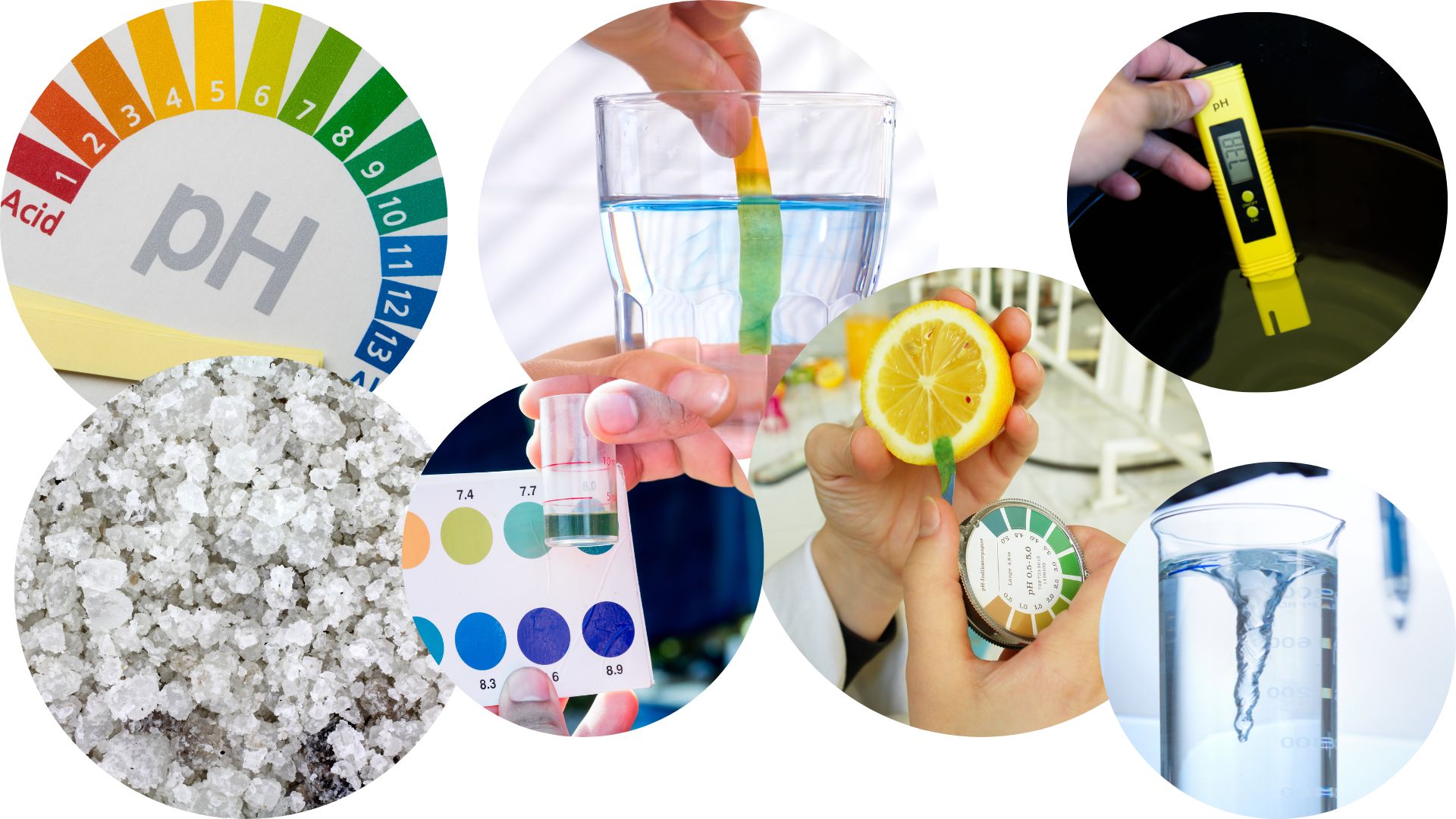 Instructional Goals covered in this module:
Instructional Goals covered in this module:- Understand the fundamentals of acid/base equilibria, including pH calculations, buffer behavior, acid/base titrations, and their relationship to electrophiles and nucleophiles.
-
Module 5: Lesson 1: Brønsted-Lowry Acids and Bases
Upon completion of this lesson, you will be able to:Student Learning Outcomes:
- Identify acids, bases, and conjugate acid-base pairs according to the Brønsted-Lowry definition.
-
Write equations for acid and base ionization reactions.
- Use the ion-product constant for water to calculate hydronium and hydroxide ion concentrations.
- Describe the acid-base behavior of amphiprotic substances.
1 URL -
Module 5: Lesson 2: pH and pOH
Upon completion of this lesson, you will be able to:Student Learning Outcomes:
- Explain the characterization of aqueous solutions as acidic, basic, or neutral.
-
Express hydronium and hydroxide ion concentrations on the pH and pOH scales.
- Perform calculations relating pH and pOH.
1 URL -
Module 5: Lesson 3 : Relative Strengths of Acids and Bases
Upon completion of this lesson, you will be able to:Student Learning Outcomes:
- Assess the relative strengths of acids and bases according to their ionization constants.
-
Rationalize trends in acid–base strength in relation to molecular structure.
- Carry out equilibrium calculations for weak acid–base systems.
- Deduce whether a salt solution will be acidic, basic, or neutral.
- Calculate the concentrations of the various species in a salt solution.
- Describe the process that causes solutions of certain metal ions to be acidic.
2 URLs -
Module 5: Lesson 4: Polyprotic Acids
Upon completion of this lesson, you will be able to:Student Learning Outcomes:
- Extend previously introduced equilibrium concepts to acids and bases that may donate or accept more than one proton.
1 URL - Extend previously introduced equilibrium concepts to acids and bases that may donate or accept more than one proton.
-
Module 5: Lesson 5: Buffers
Upon completion of this lesson, you will be able to:Student Learning Outcomes:
- Breakdown the composition and function of acid–base buffers.
-
Calculate the pH of a buffer before and after the addition of added acid or base.
1 URL -
Module 5: Lesson 6: Acid-Base Titrations
Upon completion of this lesson, you will be able to:Student Learning Outcomes:
- Interpret titration curves for strong and weak acid-base systems.
-
Compute sample pH at important stages of a titration.
- Explain the function of acid-base indicators.
1 URL, 1 Quiz -
Module 6: Equilibria of Other Reactions
 Instructional Goals covered in this module:
Instructional Goals covered in this module:- Understand the principles of Lewis acids and bases and Chemical Equilibria.
-
Module 6: Lesson 1: Precipitation and Dissolution
Upon completion of this lesson, you will be able to:Student Learning Outcomes:
- Write chemical equations and equilibrium expressions representing solubility equilibria.
-
Carry out equilibrium computations involving solubility, equilibrium expressions, and solute concentrations.
1 URL -
Module 6: Lesson 2: Lewis Acids and Bases
Upon completion of this lesson, you will be able to:Student Learning Outcomes:
- Explain the Lewis model of acid-base chemistry.
-
Write equations for the formation of adducts and complex ions.
- Perform equilibrium calculations involving formation constants.
1 URL -
Module 6: Lesson 3: Coupled Equilibria
Upon completion of this lesson, you will be able to:Student Learning Outcomes:
- Describe examples of systems involving two (or more) simultaneous chemical equilibria.
-
Calculate reactant and product concentrations for multiple equilibrium systems.
- Compare dissolution and weak electrolyte formation.
1 URL, 1 Quiz -
Module 7: Electrochemistry
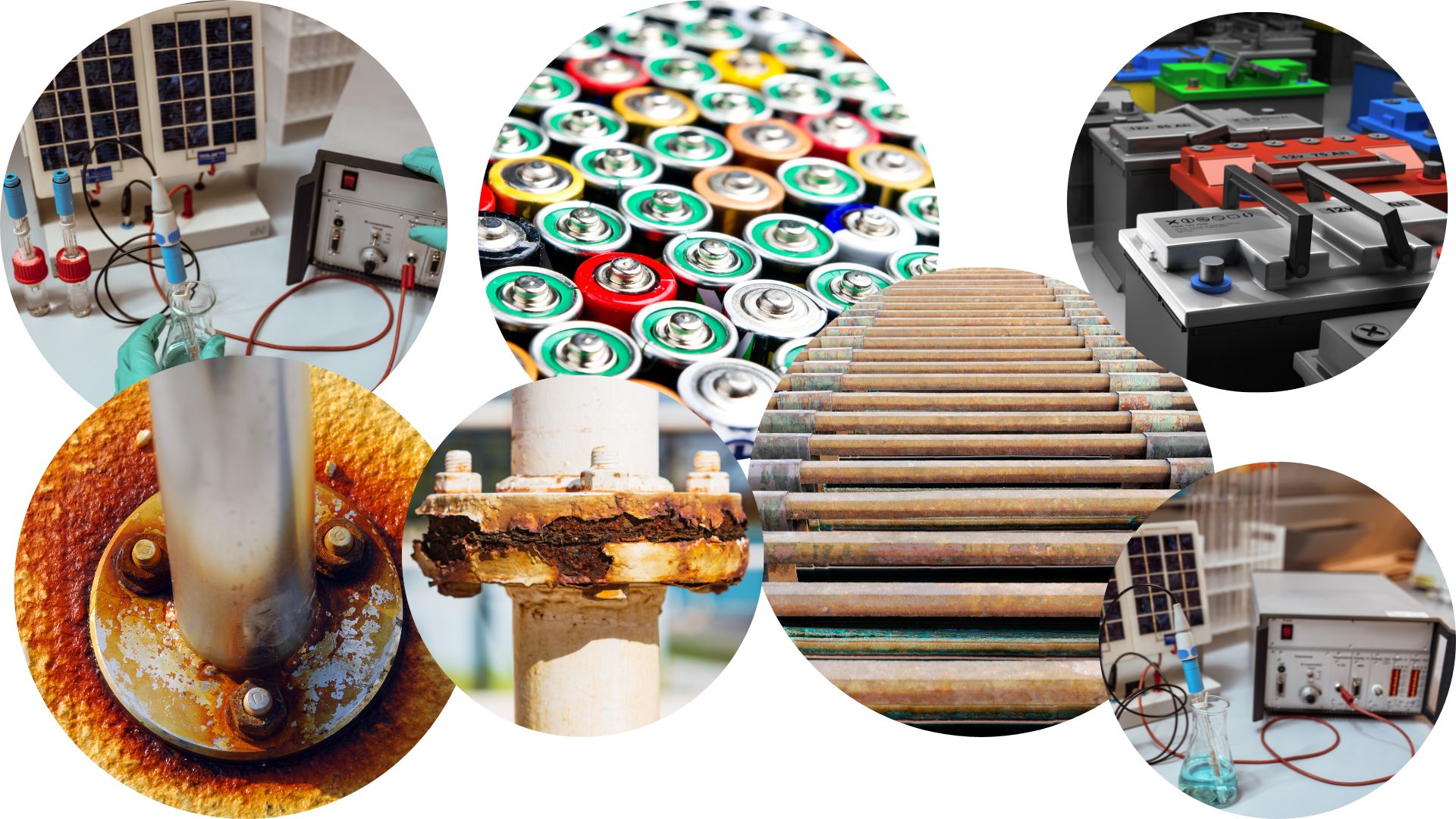 Instructional Goals covered in this module:
Instructional Goals covered in this module:- Understand the basics of electrochemistry, and the relationship of electrical parameters to thermodynamic and stoichiometric parameters.
-
Modulo 7: Lesson 1: Balancing Oxidation-Reduction Reactions
Upon completion of this lesson, you will be able to:Student Learning Outcomes:
- Define electrochemistry and a number of important associated terms.
-
Split oxidation-reduction reactions into their oxidation half-reactions and reduction half-reactions.
- Produce balanced oxidation-reduction equations for reactions in acidic or basic solutions.
- Identify oxidizing agents and reducing agents.
1 URL -
Module 7: Lesson 2: Galvanic Cells
Upon completion of this lesson, you will be able to:Student Learning Outcomes:
- Use cell notation to describe galvanic cells.
-
Describe the basic components of galvanic cells.
1 URL -
Modelu 7: Lesson 3: Standard Reduction Potentials
Upon completion of this lesson, you will be able to:Student Learning Outcomes:
- Determine standard cell potentials for oxidation-reduction reactions.
-
Use standard reduction potentials to determine the better oxidizing or reducing agent from among several possible choices.
1 URL -
Module 7: Lesson 4: Potential, Free Energy, and Equilibrium
Upon completion of this lesson, you will be able to:Student Learning Outcomes:
- Relate cell potentials to free energy changes.
-
Use the Nernst equation to determine cell potentials at nonstandard conditions.
- Perform calculations that involve converting between cell potentials, free energy changes, and equilibrium constants.
1 URL -
Module 7: Lesson 5: Batteries and Fuel Cells
Upon completion of this lesson, you will be able to:Student Learning Outcomes:
- Classify batteries as primary or secondary.
-
List some of the characteristics and limitations of batteries.
- Provide a general description of a fuel cell.
1 URL -
Module 7: Lesson 6: Corrosion
Upon completion of this lesson, you will be able to:Student Learning Outcomes:
- Define corrosion.
-
List some of the methods used to prevent or slow corrosion.
1 URL -
Module 7: Lesson 7: Electrolysis
Upon completion of this lesson, you will be able to:Student Learning Outcomes:
- Describe electrolytic cells and their relationship to galvanic cells.
-
Perform various calculations related to electrolysis.
1 URL, 1 Quiz -
Module 8: Nuclear Chemistry
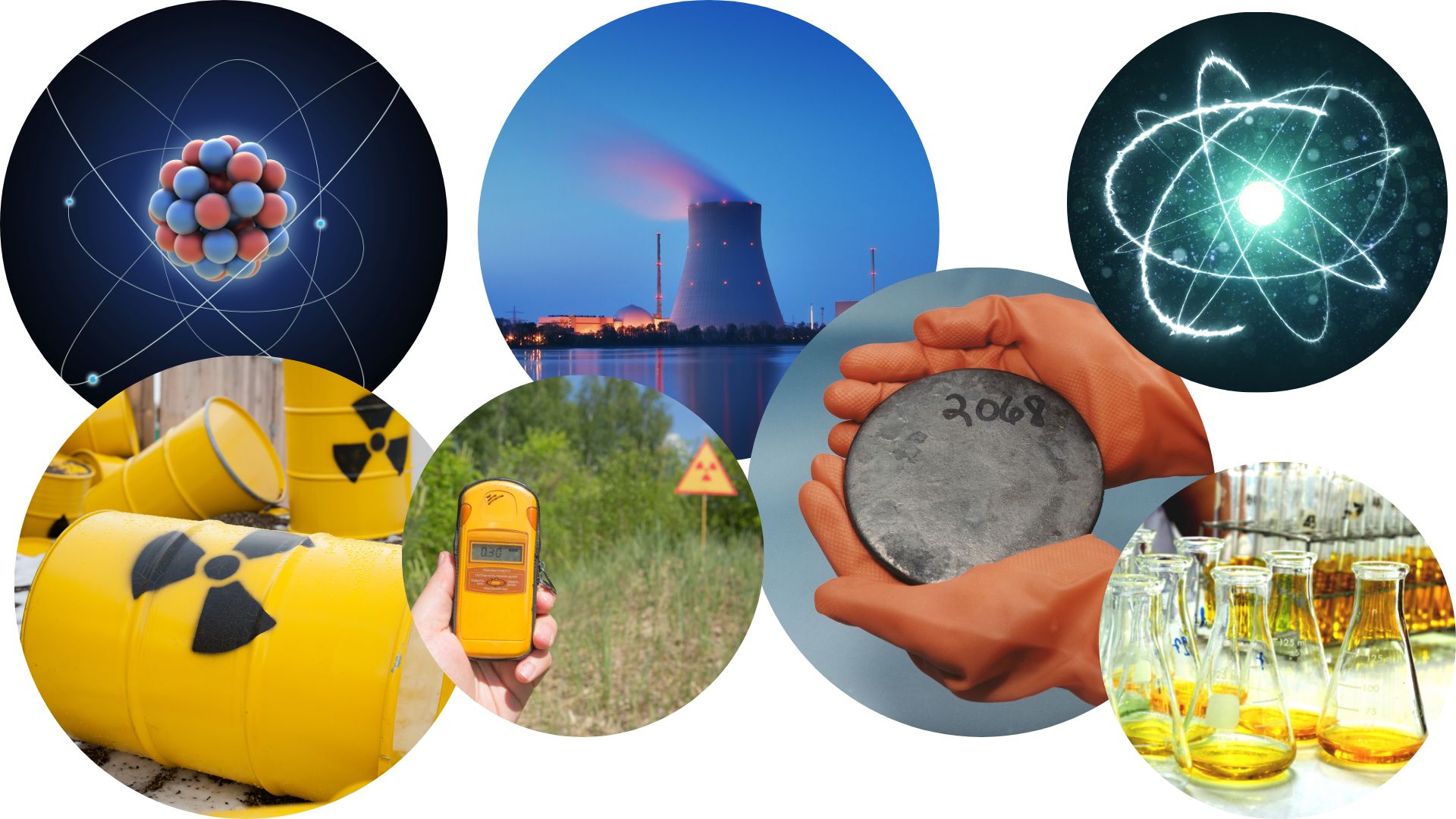 Instructional Goals covered in this module:
Instructional Goals covered in this module:- Understand basic aspects of nuclear chemistry.
-
Module 8: Lesson 1: Nuclear Structure and Stability
Upon completion of this lesson, you will be able to:Student Learning Outcomes:
- Describe nuclear structure in terms of protons, neutrons, and electrons.
-
Calculate mass defect and binding energy for nuclei.
- Explain trends in the relative stability of nuclei.
1 URL -
Module 8: Lesson 2: Nuclear Equations
Upon completion of this lesson, you will be able to:Student Learning Outcomes:
- Identify common particles and energies involved in nuclear reactions.
-
Write and balance nuclear equations.
1 URL -
Module 8: Lesson 3: Radioactive Decay
Upon completion of this lesson, you will be able to:Student Learning Outcomes:
- Recognize common modes of radioactive decay.
-
Identify common particles and energies involved in nuclear decay reactions.
- Write and balance nuclear decay equations.
- Calculate kinetic parameters for decay processes, including half-life.
- Describe common radiometric dating techniques.
1 URL -
Module 8: Lesson 4: Transmutation and Nuclear Energy
Upon completion of this lesson, you will be able to:Student Learning Outcomes:
- Describe the synthesis of transuranium nuclides.
-
Explain nuclear fission and fusion processes.
- Relate the concepts of critical mass and nuclear chain reactions.
- Summarize basic requirements for nuclear fission and fusion reactors.
1 URL -
Module 8: Lesson 5: Uses of Radioisotopes
Upon completion of this lesson, you will be able to:Student Learning Outcomes:
- List common applications of radioactive isotopes.
1 URL - List common applications of radioactive isotopes.
-
Module 8: Lesson 6: Biological Effects of Radiation
Upon completion of this lesson, you will be able to:Student Learning Outcomes:
- Describe the biological impact of ionizing radiation.
-
Define units for measuring radiation exposure.
- Explain the operation of common tools for detecting radioactivity.
- List common sources of radiation exposure in the US.
1 URL, 1 Forum, 1 Quiz -
Course and Self Evaluation & Certificate
 In this section, you can provide feedback about this course to help us make NextGenU.org better. Once evaluations are completed, you will be able to download your certificate of completion.
In this section, you can provide feedback about this course to help us make NextGenU.org better. Once evaluations are completed, you will be able to download your certificate of completion.


